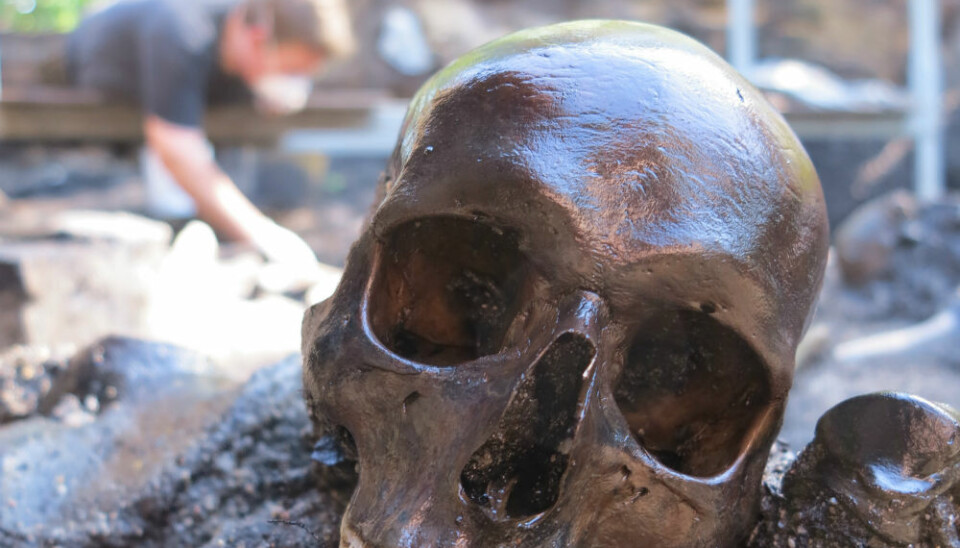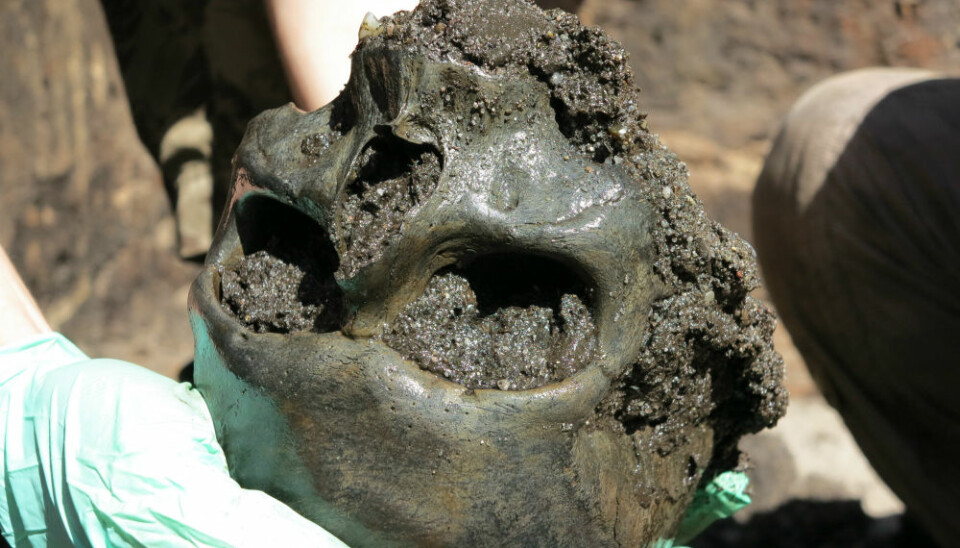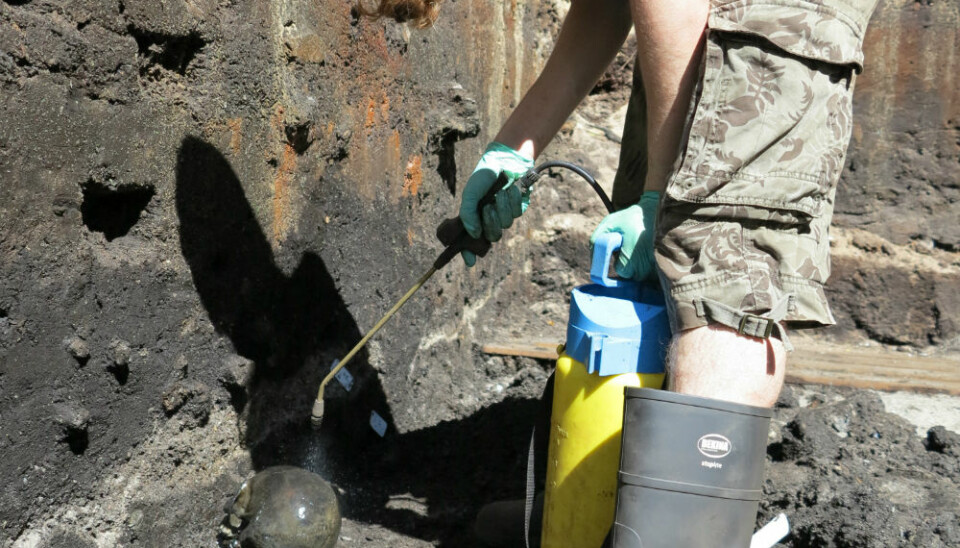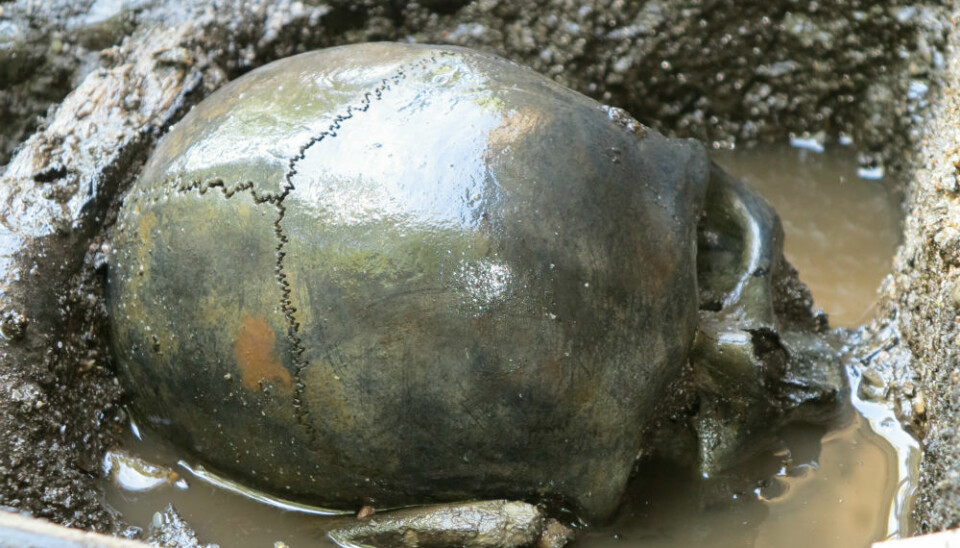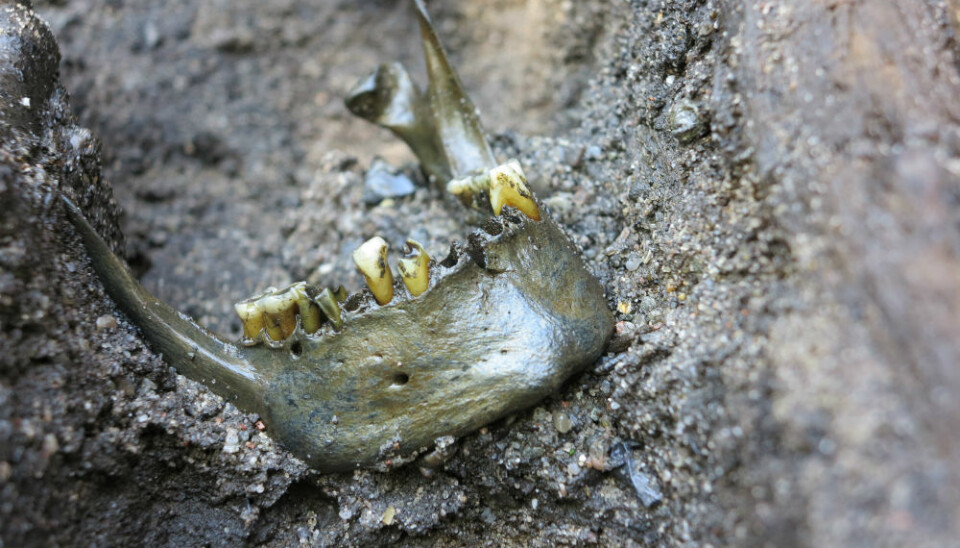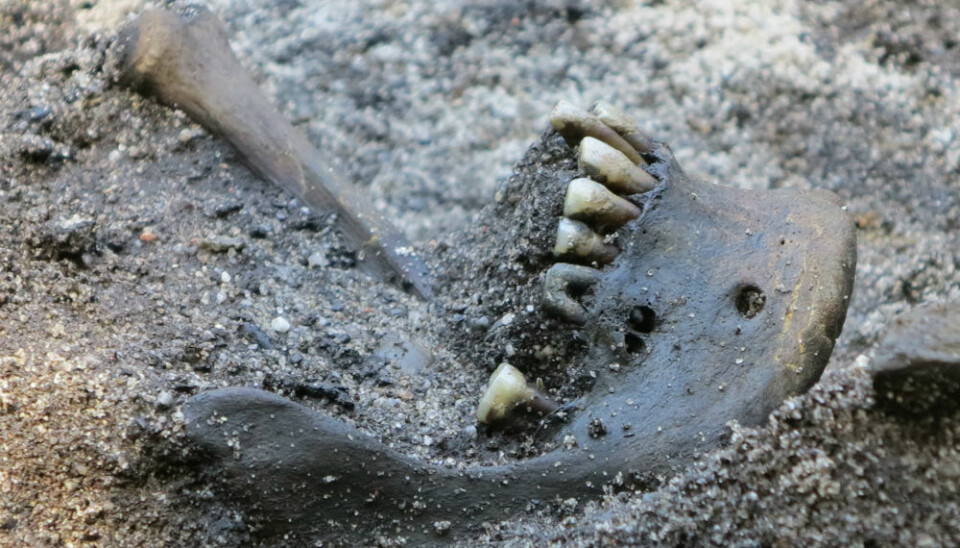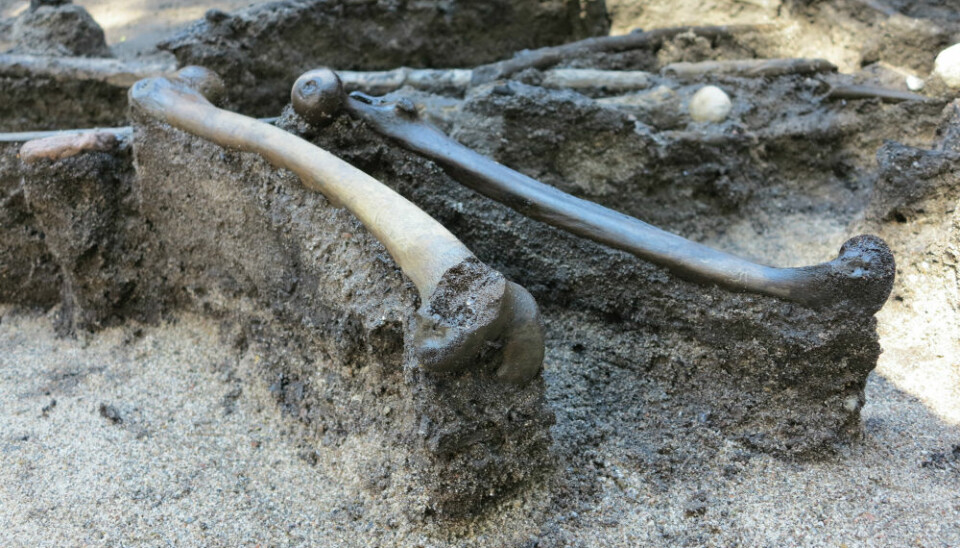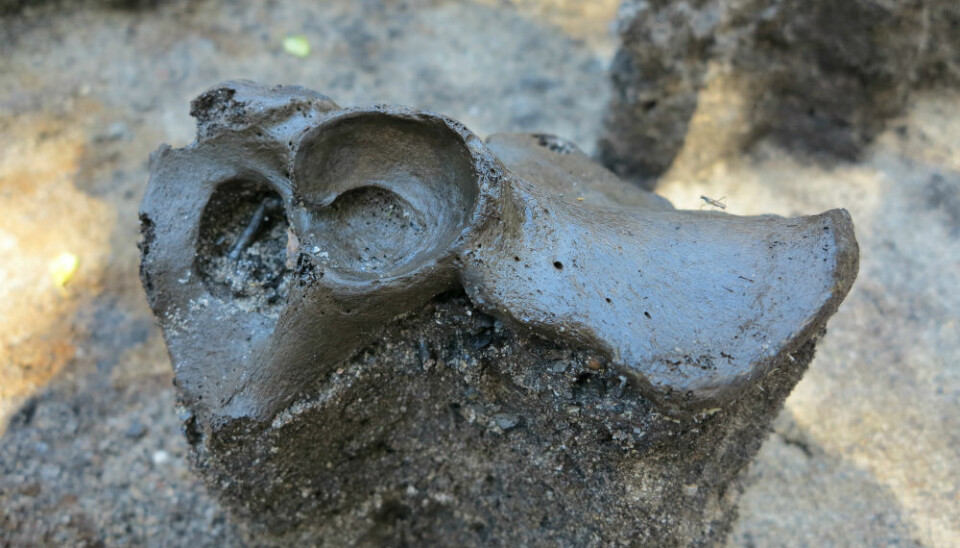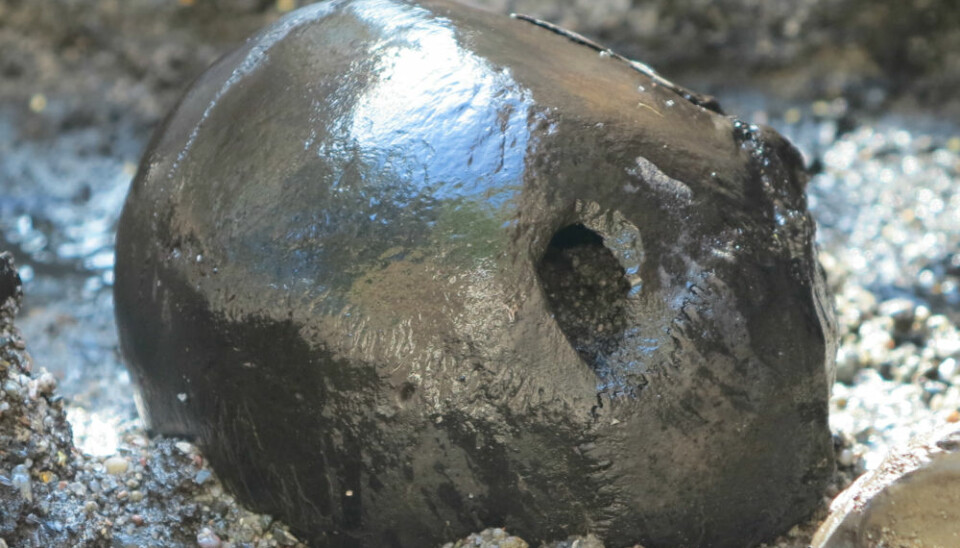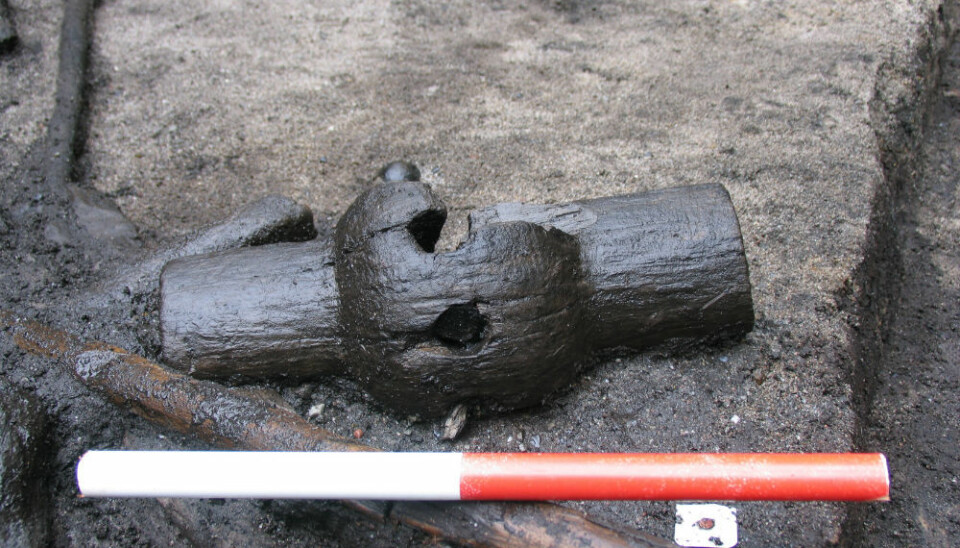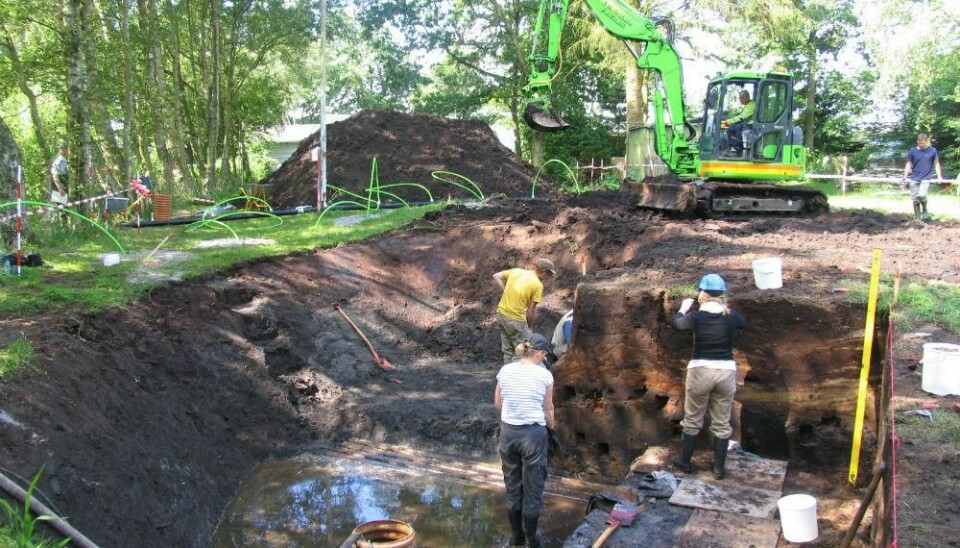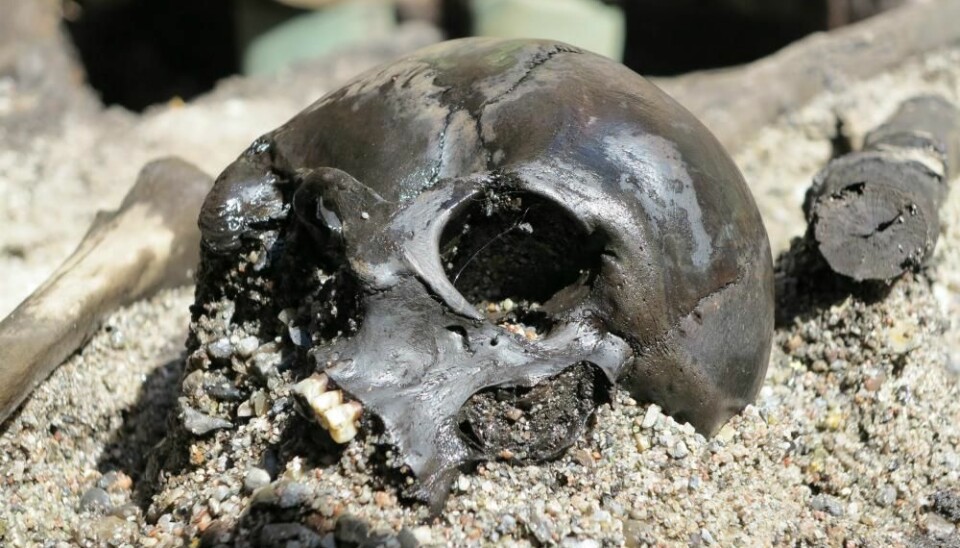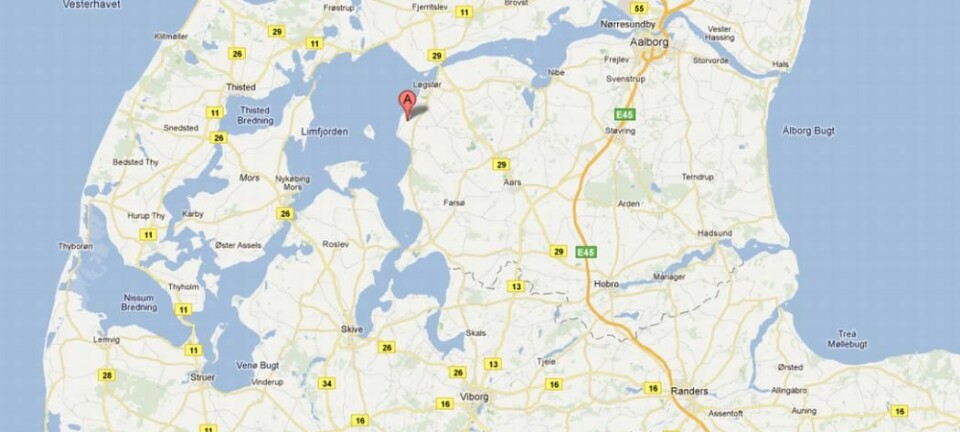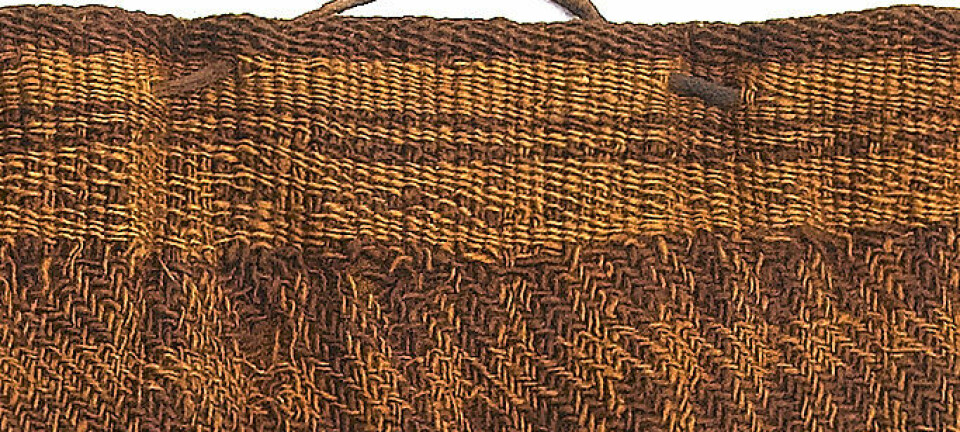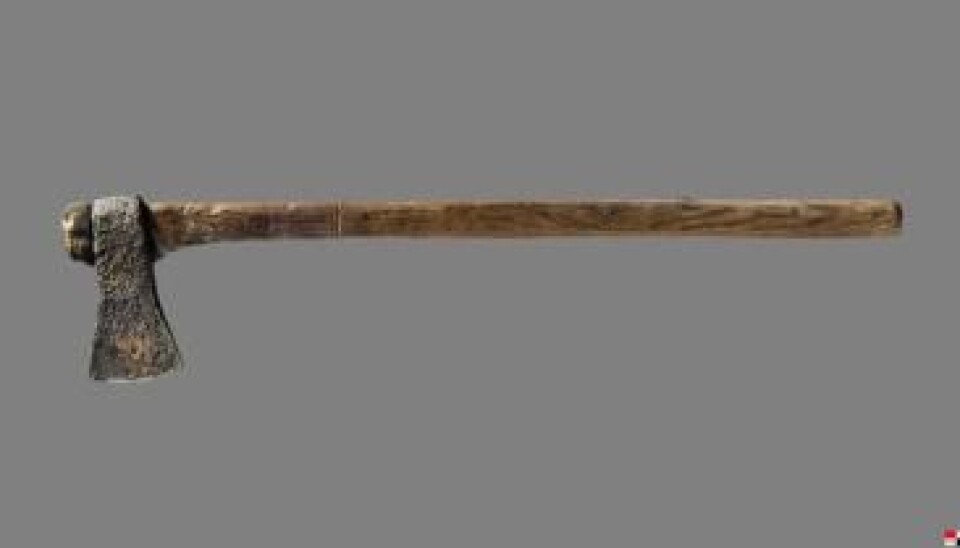
An entire army sacrificed in a bog
Archaeologists have found skeletal remains of an entire army in an ancient mass grave in Denmark. The bones confirm reports from written sources of shocking Teutonic massacres.
A Danish bog has been harbouring a terrifying secret for thousands of years.
Archaeologists have spent all summer excavating a small sample of what has turned out to be a mass grave containing skeletal remains from more than 1,000 warriors, who were killed in battle some 2,000 years ago.
“We found a lot more human bones than we had expected,” says Ejvind Hertz, curator at Skanderborg Museum.
The discovery of the many Iron Age bones has attracted international attention, partly because the body parts are macabre per se, but also because the bones are surprisingly well preserved. Furthermore, the find confirms a Roman source’s description of the Teutons’ atrocious war practices.
At this early stage, we can see that the bones have bite marks on them, and parts of the joints have been gnawed off. So there’s no doubt that predators have been in contact with the body parts.”
The site is located in the Alken Enge wetlands near Lake Mossø on the Jutland peninsula.
Bones reveal wounds from weapons
Some 2,000 years ago, the Alken warriors are thought to have been sacrificed to some gods, which we’re not very familiar with today.
The bones ended up in the bog at a time when it wasn’t a bog; rather, it was a small basin by Lake Mossø, created by a tongue of land jutting into the lake.
The archaeologists have so far only excavated an area of 80-90 square metres, although the site stretches over an area of 3,600 square metres.
This is the first time that something like this has been found in northern Europe.
Excavations in wetlands are very expensive, since water needs to be constantly pumped out. Also, the finds are so densely concentrated that it takes a long time to get through all the layers.
The area that has so far been excavated contained bone fragments from around 240 men aged between 13 and 45. The men’s bones are marked by melee weapons such as swords and axes.
Meadow filled with dead warriors
The unexcavated basin in the bog stretches over a huge area covering almost 40 hectare and is believed to contain the remains of more than 1,000 warriors.
When asked how the archaeologists can tell that this many warriors are buried there, Hertz says: “We know that people who cut peat here in the 19th and 20th centuries found bone fragments. We’ve also made test excavations in the basin.”
The bones are completely fresh. Some DNA has been preserved, so we can get a good profile of what Iron Age man looked like. An anthropological analysis of the bones will provide us with a picture of their diet and their physical appearance.
The archaeologists did not find complete skeletons, only skeletal parts. They can see that the bog contains many different individuals, since humans have, for instance, only one left thighbone.
Dead warriors were left to rot on the battlefield
The army beneath the bog may have been defeated and killed in a battlefield located far away from Alken Wetlands.
Hertz says that if this were the case, it must have been a massive logistical task for Iron Age people to transport the bones to the lake.
The researchers cannot say how this may have come about or where the battle took place. Many of the archaeological finds in the area stem from armies that came from afar.
But in principle, the battlefield may have been located right next to the sacrificial site. The sacrifice, however, occurred long after the battle.
“The bones have been sacrificed months or even years after the warriors were killed. We won’t know until the bones have been carefully analysed,” says the curator.
“At this early stage, we can see that the bones have bite marks on them, and parts of the joints have been gnawed off. So there’s no doubt that predators have been in contact with the body parts.”
Finds confirm tales of brutal warfare
The marks from the predators’ bite indicate that the dead warriors were left to die and rot on the battlefield, without anyone bothering to bury or even remove the bodies.
This confirms parts of what a Roman source wrote about war practices among Northern Europeans in the period around the time of the birth of Christ.
One of the greatest historians of the Roman Empire, Tacitus (56 AD – 120 AD) described the aftermath of the Roman’s famous defeat in the Battle of the Teutoburg Forest in 9 AD.
“In the middle of the plain, bones lay either spread out or heaped, depending on whether they had fled or resisted. Next to the bones lay bits of spears and horse limbs, and there were also human heads nailed to trees. In the nearby groves were barbarian altars in which they had sacrificed tribunes and centurions of the first rank,” Tacitus wrote in his Annals.
We also know from sources that when the Teutons won a battle, they killed off all the surviving enemies, except for the few who managed to run back to their home and tell of their defeat.
Very few weapons found in the grave
The archaeologists cannot determine the nationality of the slain warriors because they have found very few remains of weapons in the grave.
Among the numerous bone fragments, they have only found a few arrowheads, the remains of a shield and a very well preserved axe, complete with a shaft, which is very rare.
An invaluable source of info about Iron Age man
The bones are nevertheless invaluable: “This is the first time that something like this has been found in northern Europe,” says Hertz.
The conditions for preservation in the Alken wetlands have been optimal, i.e. the atmosphere has been oxygen-free.
“The bones are completely fresh,” he says. “Some DNA has been preserved, so we can get a good profile of what Iron Age man looked like. An anthropological analysis of the bones will provide us with a picture of their diet and their physical appearance.”
The researchers are nearing the completion of the current excavation project. In the coming months, they will be analysing the many bones together with international experts,
The project, titled ‘The army and post-war rituals in the Iron Age – warriors sacrificed in the bog at Alken Enge in Illerup Ådal’ is a collaboration between archaeologists and geologists at Skanderborg Museum, Moesgård Museum and Aarhus University.
----------------------------------------
Read the Danish version of this article at videnskab.dk
Translated by: Dann Vinther

